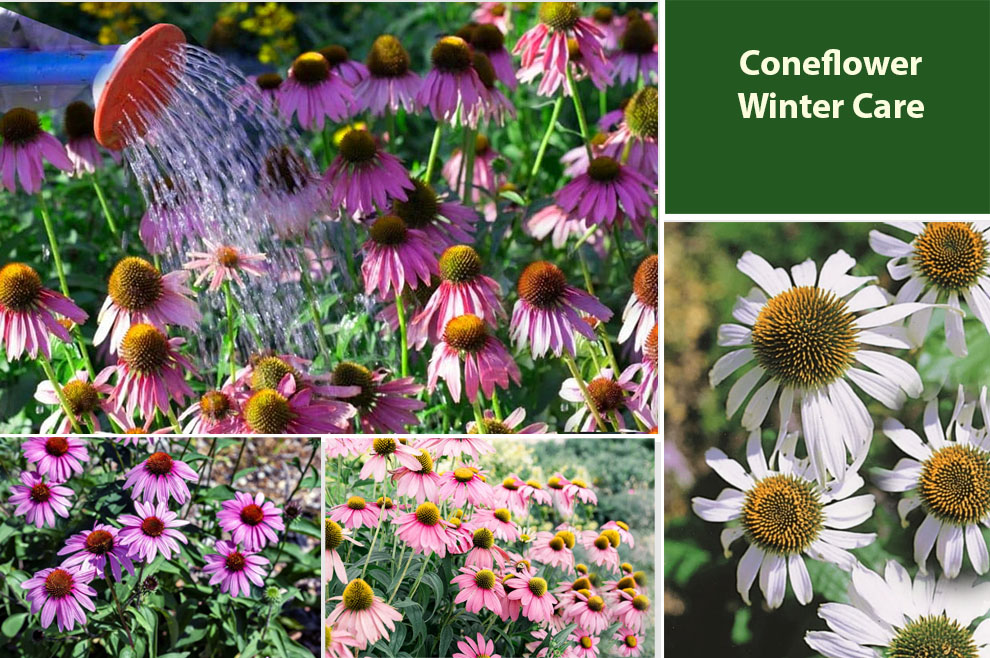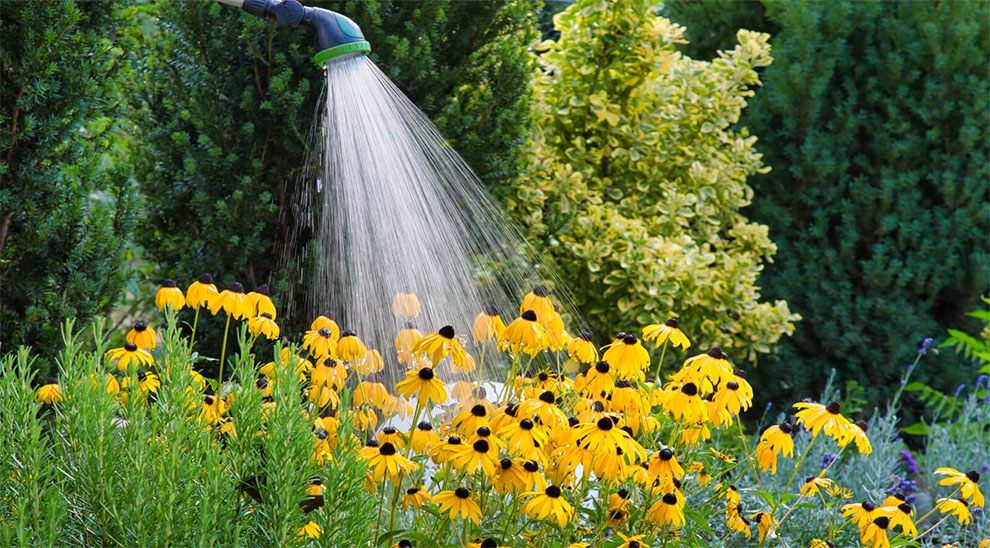Coneflower (Echinacea Plant) Winter Care – Full Guide
During winter, care for coneflowers by trimming them back to 2-3 inches above the ground. Secondly mulch the base, sparingly water to prevent overhydration, and shield it from harsh winds and snow. Monitor for diseases. These steps ensure their vitality in spring.

As the vibrant colors of summer fade into the chilly embrace of winter, garden enthusiasts are faced with the task of safeguarding their beloved plants from the harsh elements.
Among these cherished blooms, coneflowers stand out for their hardy nature and captivating beauty. These daisy-like perennials, scientifically known as Echinacea, bring a burst of color to gardens and landscapes.
However, to ensure that these blooms continue to thrive season after season, proper coneflower winter care is essential. In winter, pruning and protection from cold & frost become important for coneflowers.
In this article, we will delve into the world of coneflowers and explore effective strategies for winter care, ensuring that these hardy beauties emerge from winter’s grasp with their vitality intact.
Understanding the Resilient Coneflowers
Before we delve into the specifics of winter care, let’s take a moment to appreciate the remarkable qualities of coneflowers.
These native North American plants are not only prized for their stunning appearance but also for their role in supporting pollinators and ecosystems.
Coneflowers come in a variety of colors, from classic purple to vibrant pink and whites, making them a versatile choice for any garden. Their ability to attract butterflies, bees, and other beneficial insects adds an ecological dimension to their charm.
How Much Is Coneflower Temperature Tolerance?
When growing Coneflower, know that it can tolerate frost and even some light freezing. Established plants can usually handle temperatures as low as 0°F (-18°C) without severe damage. However, prolonged exposure to extremely cold temperatures can lead to damage to the foliage and stems.
As for heat, they can generally tolerate temperatures in the range of 90°F (32°C) without significant stress. Adequate watering during hot spells is important to help them cope with high temperatures.
How To Prepare Coneflowers for Winter – A Delicate Transition With Pruning!
As autumn leaves begin to fall and a chill permeates the air, coneflowers require special attention to navigate the transition into winter. A key step in winter care is the late fall cleanup pruning.
Gently trim away any dead foliage and spent flower heads. This not only improves the plant’s appearance but also prevents potential diseases from taking hold in decaying plant material.
Removing debris from around the base of the plant further reduces the risk of harboring pests or pathogens.
How Far Back Do You Cut Coneflowers for Winter?
When cutting back coneflowers (Echinacea) for winter, it’s generally recommended to leave a portion of the plant standing.
In late fall or early winter, you can cut the plants back to a height of about 2 to 3 inches (5 to 7.5 cm) above the ground.
This allows for some protection for the crown of the plant, where new growth will emerge in the spring
How To Care for Coneflowers In Winter?
You need to take care of the following things if you want your coneflower to keep blooming season after season.
A. Mulching: A Blanket of Protection
Imagine tucking your plants under a cozy blanket for the winter – that’s essentially what mulch does.
Applying a layer of mulch around coneflowers helps regulate soil temperature, prevents heaving caused by freeze-thaw cycles, and conserves moisture.
As temperatures drop, coneflowers can benefit from the insulating properties of mulch, shielding their roots from extreme cold. Pine straw, straw, or shredded leaves make excellent choices for mulching.
B. Ensuring Adequate Moisture for Echinacea Plant Winter Care
While it might seem counterintuitive, maintaining proper moisture levels during winter is crucial for coneflowers.
Before the first frost sets in, ensure that your coneflowers are well-hydrated. This hydrating session equips the plants to better endure the dry spells of winter.
During the winter months, occasional watering may be necessary, especially if there is a prolonged period without precipitation. However, exercise caution to prevent overwatering, as waterlogged soil can lead to root rot.
C. Shielding from Nature’s Fury – Protection from Winter Winds
Winter winds and heavy snowfall can pose challenges to coneflowers. Providing wind protection is essential to prevent desiccation, where plants lose moisture faster than they can absorb it.
Natural windbreaks or temporary barriers can shield coneflowers from harsh winds, reducing stress on the plant.
Additionally, snow can be both a friend and a foe. While a light layer of snow acts as insulation, heavy snow accumulation can bend or break stems. Gently brush off excess snow to prevent damage.
D. Combatting The Pests and Diseases in Winter
As the cold weather sets in, disease prevention becomes a priority. Prune away any diseased or damaged parts of the plant, ensuring that the cuts are clean and strategic.
Coneflower winter care through proper pruning not only eliminates potential disease sources but also promotes healthy growth come spring.
Mold and mildew can also be a concern during winter, especially in humid conditions. Adequate spacing between plants and good air circulation can help minimize the risk of these issues.
On Going Winter Maintenance
Winter care is not a one-time task; it requires consistent vigilance. Periodically check your coneflowers throughout the winter months for signs of stress, disease, or pests.
If you notice any problems, take swift action to address them. In cases of sudden severe weather, consider employing emergency measures like temporary covers to protect your plants.
Easing The Coneflowers into Spring: A Gradual Transition
As the days grow longer and the earth warms, it’s time to prepare your coneflowers for spring. Engage in pre-spring pruning to remove any remaining dead growth.
This clears the way for new growth to emerge unimpeded. Gradually remove winter protections as the threat of frost diminishes.
Resume regular watering routines and watch as your coneflowers awaken from their winter slumber with renewed vigor.
Related: Aster Care During Winters
Echinacea Plant Winter Care Indoors

Caring for Echinacea plants indoors during winter requires attention to key factors.
Place them in a cool, well-lit area, away from direct heat sources. Water sparingly, allowing the soil to dry slightly between waterings. Trim back leggy growth to promote compactness.
Monitor for pests and diseases and treat them as needed. With proper care, Echinacea plants can thrive indoors throughout the winter months, rewarding you with their vibrant blooms once spring arrives.
Conclusion: Nurturing Nature’s Treasures
Coneflowers are more than just plants; they are a testament to nature’s beauty and resilience. By providing them with the care they need during winter, we not only ensure their survival but also contribute to the overall health of our garden ecosystems.
As you embark on your journey of coneflower winter care, remember that a little effort goes a long way. With each thoughtful action you take, you are nurturing nature’s treasures and setting the stage for vibrant blooms to grace your garden year after year.
